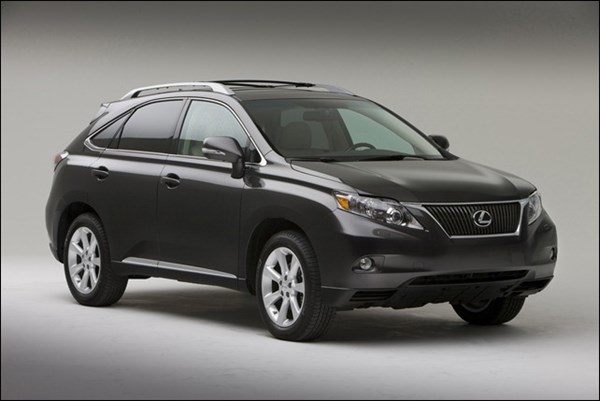2011 Lexus RX 350
The thing about the 2011 Lexus RX 350: It is evolution in action.
The thing about the 2011 Lexus RX 350: It is evolution in action.
When the first-generation Lexus RX—the 300—appeared in 1998 as a ’99 model, it was something unexpected. Whereas sport utility-type vehicles—more specifically, the car platform-based “crossover utility vehicles,” as the segment was to become known—were not unusual, but the RX marked a shift to the luxury category for those vehicles. It was no longer about having four- or all-wheel-drive capabilities in a vehicle that came with leather seats that you could conceivably drive through the Rockies, it was more about a CUV that you might use to drive along a gravel road while being cosseted in comfort.
In March 2003 the 2004 RX 330 was launched. In February 2006 a 3.5-liter engine was installed, which made the RX 330 an RX 350. In February 2009, the current-generation RX 350 went on sale.
And it is worth noting that in April 2005 Lexus put the 2006 RX 400h on the market, the first-hybrid luxury CUV. It was followed in July 2009 by the RX 450h.
Now, other vehicle manufacturers were by no means unaware of what was going on with the wildly successful RX. So in short order they began to bring out their own luxury CUVs and pretty soon you couldn’t walk through a Costco parking lot without seeing an endless array of the vehicles.

With the RX, Lexus has followed the path of evolution. The vehicle has been modified and improved—remember, one of the tenants of parent company Toyota is “continuous improvement.” But there is, at times, something to be said for “discontinuous improvement.”

While Lexus has sharpened its metaphoric pencil for the RX, some of its competitors have taken a more revolutionary approach given that they are fully aware of what Lexus is offering and so don’t simply want to replicate what’s already there.
So while the RX evolved, the others mutated in a positive way.
This is not to say that the RX 350 is not a good product in and of itself. But it is to say that when put in the context of what else is out there, the RX seems to be lagging a bit.

Consider the exterior. If you go back to the original and follow the design up to the present, you’ll see that it is different, but in a nip-tuck way. Sure, it is tighter and sexier, and the positions of elements have changed, but fundamentally it is quite similar through the years. Lexus calls its design language “L-finesse,” and the word finesse is about delicacy and subtlety, which is what the design changes certainly are.

Inside, again, it is incrementalism, with the exception of the deployment of the “Remote Touch” device, which allows the user to operate the nav system, HVAC, audio, phone, and more. It uses a rectangular toggle located in the center console that fits readily into the palm of the hand. It can be moved like a computer mouse and on the display screen, there is a pointing figure that’s moved around based on how the knob is manipulated. There are “enter” buttons on either side to click the selection. It is quick to use and easy to understand, which is a considerable advantage vis-à-vis some competitive systems that may be more technical, but also require a manual.
The RX is comfortable, capable, full of features ranging from a keyless entry system to a smog sensor in the HVAC system that detects noxious exhaust and switches from fresh air to recirculation in a jiffy, and in all is still a handsome vehicle.
So from the standpoint of a single vehicle, it is certainly commendable. But when it is placed among the others that have emerged as it has evolved, the matter becomes far more Darwinian.
Selected Specs
Engine: 3.5-liter, DOHC 24-valve, dual VVT-i V6
Material: Aluminum block and heads
Horsepower: 275 @ 6,200 rpm
Torque: 257 lb-ft @ 4,700 rpm
Transmission: Six-speed automatic
Steering: Electric power rack-and-pinion
Wheelbase: 107.9 in
Length: 187.8 in
Width: 74.2 in
Height: 66.3 in
Curb weight (all-wheel-drive): 4,343 lb
EPA fuel economy: 18/24 mpg city/hwy


.jpg;width=70;height=70;mode=crop)